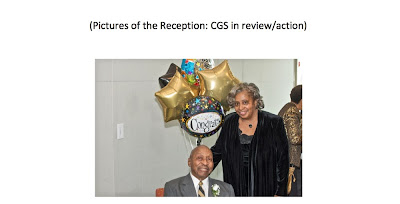By Vernon M.
Herron
Dr. Clifford A. Jones, Sr.
the eminent pastor of the renowned Friendship Missionary Baptist Church of
Charlotte, NC is a candidate for President of the National Baptist Convention, USA, Inc. The 134th
annual session of the convention
will convene next September 1-5, 2014 in New Orleans, Louisiana at at the New
Orleans Ernest N. Morial Convention Center.
Dr. Julius Richard
Scruggs, Senior Pastor of First Missionary Baptist Church in Huntsville,
Alabama since 1977 is the current President and has announced that he will not
be running for reelection. The President’s term is 5 years.
Candidate Jones has a
vision for the convention; it is a Spiritual Pilgrimage. It is a calling from
God because there was no intention of seeking this office. It is reported that
God wrestled with him until he finally accepted the calling to seek this noble
office.
His campaign and his
presidency will be one that is Progressive, Practical and Principled. He will
expand on a foundation already established by former presidents. That expansion
will “strategically address the concerns of many, i.e., young and established
pastors, small and large churches, ministers’ wives and all women, youth and
church leadership, with a plan which will unfold over the next 20 to 30 years.”
An example of how this expansion could unfold is his passion. It centers around
preparing young pastors to be leaders, establish a leadership institute that
Pastors could be involved in for two to three years.
It is also noted that Dr.
Jones intends to set goals which will be addressed from the national level and
down to the churches. He plans to challenge the Convention to deal with issues
and concerns which are relevant in the lives of its Christian base and “true to the original constitution set
forth when NBC was first established.” NBC—are you listening?
The following is a
supportive resolution of the Deacon Service Ministry, and is presented on
behalf of the Friendship Missionary Baptist Church, a Charlotte mega congregation.
RESOLUTION
Let it be known that Dr. Clifford A. Jones, Sr. has served as
the senior pastor of Friendship Missionary Baptist Church since October of
1982;
Whereas, under the visionary leadership of Pastor Jones, the
membership has grown to more than 8,000, therefore expanding mission and
ministry of this Christian body;
Whereas, this work and facilities have grown to include: 110
additional acres of land and a new church complex; My Sister’s House, a
facility for homeless women, operated by the Friendship Community Development
Corporation; Central Children’s Home of North Carolina, Inc. for orphaned
children located in Oxford; construction of 10 Habitat for Humanity homes at a
cost of $500,000.00; mobilization for catastrophic relief efforts in
Princeville, North Carolina from Hurricane Floyd, and in Pamplico County from
Hurricane Irene, as well as disaster efforts in Mississippi and Alabama;
Whereas, global initiatives have expanded to include:
Jamaica, Guyana, Zimbabwe, Haiti and South Africa through the Lott Carey
Foreign Mission Convention; and Friendship’s International Children’s Outreach
Ministry (ICOM) which has brought over 200 student ambassadors from South
Africa to the United States since 1998.
Whereas, the Spirit of Christmas has provided for hundreds of
homeless children each Christmas season, and the Community Table offering has
fed thousands throughout the Charlotte region, as a result of monthly food
donations at Friendship Missionary Baptist Church.
Furthermore, Dr. Jones has served as President of the General
Baptist State Convention of North Carolina, Inc., President of the Lott Carey
Foreign Mission Convention, Vice President of the Baptist World Alliance, and
is currently serving as Chairman of the Governance Committee of the National
Baptist Convention, USA, Inc.
Now, this visionary servant of Friendship Missionary Baptist
Church embarks on this calling from God and his spiritual pilgrimage, to become
the President of the National Baptist Convention, USA, Inc.
Be it resolved that today, October 27, 2013, I, Carl M.
Flamer, chair of the Friendship Missionary Baptist Church Deacon
Service Ministry Council, on behalf of the entire membership of Friendship
Missionary Church, offer our full-fledged support of Dr. Clifford A. Jones, our
First Lady, Mrs. C. Brenda Jones and their entire family as he begins this
monumental journey. To God be the Glory and may He offer you continued grace,
peace and blessings.
Amen
Contact Information
C Jones NBC 2014
3301 Beatties Ford Road
Charlotte, NC 28216
Email: info@cjonesfornbcusainc.com
Phone: 704-391-6603









